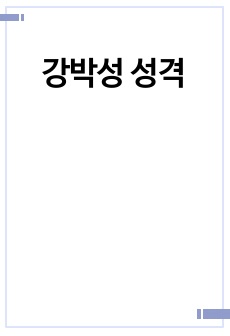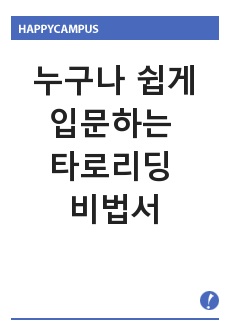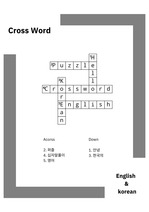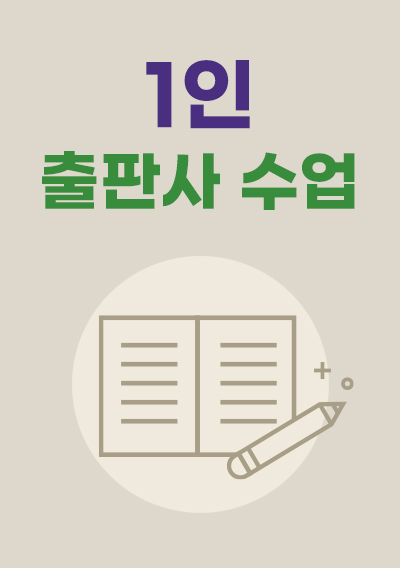탄소라벨링 정책에 대한 소비자반응모형에 관한 연구
*광*
다운로드
장바구니
소개글
서울대학교 대학원 수업 "조사방법론"에서 기말보고서로 제출하여 A+를 받은 연구제안서입니다.목차
Ⅰ. 서론Ⅱ.선행연구
2.1 탄소라벨링의 소비자반응모형
2.2 건강신념모형(HBM,Health Belief Model)
Ⅲ.연구모형 및 가설설정
Ⅳ.실험설계 및 조작적 정의
4.1 건강신념모델(HBM)의 구성개념
4.2 탄소라벨링에 대한 태도(Attitude towards CO2 labelling)
4.3 탄소라벨링을 도입한 기업에 대한 태도(Attitude towards CO2-label Firm)
4.4 탄소라벨링 제품에 대한 태도(Attitude towards CO2-label Products)
4.5 탄소라벨링 제품 구매의도(Purchase Intention of CO2-label Products)
Ⅴ.기대되는 결과 및 시사점
참고문헌
본문내용
Ⅰ. 서론조사방법론 조별 연구제안서녹색성장(Green Growth)은 경제성장과 환경보전을 동시에 달성하기 위한 새로운 성장패러다임으로서, 경제․환경․에너지 위기에 대응하고 신성장동력을 창출하는 노력으로서 세계적인 각광을 받고 있다. 이에 따라 각국은 온실가스 배출을 억제하기 위해 정부, 기업, 학계 등의 노력이 증대되고 있으며, 우리나라도 대내․외적으로 공표한 바와 같이 2020년까지 배출전망치(BAU) 대비 국가온실가스의 30% 감축목표 달성을 위한 정책이 필요한 상황이다 우리나라는 의견수렴 절차를 거쳐 2020년까지 배출전망치(BAU) 대비 국가온실가스의 30% 감축을 중기목표로 결정(2009.11.17 국무회의), 이를 국제사회에 공포한 바 있다. 또한,「저탄소녹색성장기본법」및 시행령(2010.4.14 시행)에 이러한 감축목표가 포함됨으로써 대내적으로도 목표 달성이 의무화되었다.
. 더욱이 우리나라의 GDP 대비 온실가스 배출량은 OECD 국가 평균의 1.6배에 이르고 있고, 온실가스 절대배출량은 OECD 국가 내 9위(2007년 기준), 연 평균 증가율은 1위(2005년 기준)에 있는 상황으로, 국가적인 대책이 시급한 시점이다. 이를 위해, 신재생에너지 개발, 스마트그리드 보급, 전기자동차 보급정책, 탄소라벨링제도 도입 등을 생각할 수 있는데, 본 연구는 탄소라벨링제도에 대해서 피정책대상의 반응에 초점을 두고 있다.
탄소라벨링(또는 탄소성적표지)이란 특정 제품(서비스 포함)의 전과정 즉, 원료 획득 및 가공, 제조, 수송, 유통, 사용, 재활용, 폐기물 관리 과정 동안에 배출된 각종 온실가스를 이산화탄소 환산량(CO2-equivalent)으로 정량화하여 제품에 표시하여 공개하는 제도를 가리킨다. 이는 기후변화에 대응하기 위해 소비자 환경의식을 제고하고, 생산자들이 환경친화적 제품을 생산하도록 유도하기 위한 목적을 갖고 있다. 2007년 영국에서 최초로 시행된 이 제도는 현재 우리나라를 비롯한 8개국에서 시행 중이거나 시범사업 중에 있다. 우리나라에서는 2008년 시범사업을 거쳐 2010년 8월 현재 가전제품, 우유, 두부 등 51개사 223개 제품의 탄소배출량을 확인할 수 있다. 현재는 제품마다 탄소배출 절대량만을 표기하고 있지만 2011년부터는 제품 간 탄소배출량을 비교해 기존 제품보다 탄소배출량이 적은 저탄소제품을 인증할 계획이다. 아직은 시행 초기 단계이나, 탄소라벨링 제도가 정착되면 우리사회 전반에서 녹색소비 및 생산문화가 확산되어 온실가스 저감에 큰 기여를 할 수 있을 것으로 기대된다.
참고 자료
고장석(2010), “탄소성적표지 농식품의 구매행태 분석,” 중앙대학교 박사학위논문.김광석, 송장근(2010), "Do Consumers Prefer FAIR TRADE Products? The Moderating Role of Country (Korea and the U.S.)," 경영경제연구, 제 28권, 제 2호, pp.101-127.
김정인, 신광근(2010), “탄소성적표시제에 따른 소비자 행동 분석,” 환경정책, 제 18권, 제 1호, pp.155-181.
서준혁(2009), “소비자의 사전지식이 탄소라벨이 부착된 상품의 브랜드 태도에 미치는 영향 연구,”한국외국어대학교 석사학위논문.
성희원, 전양진, 박혜선(2005), “자외선 차단 의복에 대한 소비자 조사,”한국의류학회지, 제 29권, 제 8호, pp.1136-1145.
신윤희, 전영경, 조성미, 조예령(2005), “건강 신념 모델에 근거한 성교육 프로그램이 대학생의 성병 관련지식과 성적자율성에 미치는 효과,” 대한간호학회지, 제 35권, 제 7호, pp.1304-1313.
윤인경, 장명희, 김규태, 박동호, 서지영, 박선영, 김정현(2007), “건강 신념 모델에 근거한 초․중․고등학교 우유 교육 프로그램 개발 및 적용,”한국가정과교육학회지, 제 19권, 제 4호, pp.17-36.
이명선(2001), “건강신념모델을 적용한 청소년 비행과 유해환경과의 관련성 연구,” 보건교육‧건강증진학회지, 제 18권, 제 3호, pp.37-58.
이철한(2008), “금연홍보 캠페인의 메시지 효과평가: 영상홍보물을 이용한 탐색적 연구,”한국언론정보학보, 통권 44호, pp.223-247
임송택(2009), "탄소라벨링 시대의 도래:농수산식품 분야의 경우," GS&J Institute.
최명일, 김경환, 주지혁(2009), “행위단서로서 광우병 관련 미디어 노출이 미국산 쇠고기 구매 의도에 미치는 영향,”한국언론학보, 제 53호, 제 6호, pp. 50-65.
허진호(2009). “탄소성적표지제도의 이해와 발전방안,” 환경정보, 제 31권, 제 381호, pp.42-46.
Ajzen, I., 1985, “From Intentions to Actions: A Theory of Planned Behavior,” in J. Kuhl and J. Beekmann(Eds.). Action Control: From Cognition to Behavior. Springer Verlag. New York., pp.11-39.
Ajzen, I., 1989, “Attitude Structure and Behavior,” in A, R. Pratkanis. S. J. Breckler, and A. G. Greenwald(Eds.). Attitude Structure and Function. Lawrence Erlbaum Associales. Hillsdale, NJ, pp.241-274.
Bandura A.(1977), "Self-Efficacy: Toward a Unifying Theory of Behavioral Change," Psychological Review, Vol. 84, No.2, pp.191-215
Beattie, G. and Sale, L.(2009), "Explicit and Implicit Attitudes to Low and High Carbon Footprint Products," The International Journal of Environmental, Cultural, Economic and Social Sustainability, Vol.5, No.3, pp.191-206.
Becker M. H.(1974a), "The Health Belief Model and Personal Health Behavior," Health Education Monographs, Vol. 2, No. 4, pp.326-327.
Becker M. H.(1974b), "The Health Belief Model and Sick Role Behavior," Health Education Monographs, Vol. 2, No. 4, pp.409-419.
Bjørner, T., Hansen, L. and Russell, C.(2004), “Environmental Labeling and Consumers` Choices: An Empirical Analysis of the Effect of the Nordic Swan,” Journal of Environmental Economics and Management, Vol.47 No.3, pp.411–434.
Brown, T. J. and Dacin, P. A.(1997), “The Company and the Product: Corporate Associations and Consumer Product Responses,” Journal of Marketing, Vol.61, No.1, pp.68-85.
Cronin Jr., Joseph, J., Brady, M. K., and Hult, G. T. M.(2000), “Assessing the Effects of Quality, Value, and Customer Satisfaction on Consumer Behavioral Intentions in Service Environments,”Journal of Retailing, Vol.76, No.2, pp.193-218.
De Pelsmacker, P., Janssens, W., Sterckx, E., and Mielants, C.(2006), “Fair-Trade beliefs, Attitudes and Buying Behavior of Belgian Consumers,” International Journal of Nonprofit and Voluntary Sector Marketing, Vol.11, No.2, pp.125-138.
Dhar, T. and Foltz, J.(2005). “Milk by Any Other Name... Consumer Benefits from Labeled Milk,” American Journal of Agricultural Economics, Vol.87 No.1, pp.214–228.
Folkes, V. S. and Kamins, M. A.(1999), “Effets of Information and Firms` Ethical and Unethical Actions on Consumers` Attitudes,” Journal of Consumer Psychology, Vol.8, No.3, pp.243-259.
Ferraro, K. F.(1990). "Health Beliefs and Proscriptions on Public Smoking," Sociological Inquiry, Vol. 60, No. 3, pp.244-63.
Grankvist, G., Biel, A.(2007), “Predictors of Purchase of Eco-labelled Food Products: A Panel Study,” Food Quality and Preference, Vol.18, No.4, pp.701–708.
Janz N. K and Becker M. H.(1984), "The Health Belief Model: A Decade Later," Health Education Quarterly, Vol. 11, No. 1, pp.1-47.
Janz N. K and Becker M. H.(1985), "The Health Belief Model Applied to Understanding Diabetes Regimen Compliance," The Diabetes Educator, Vol.11, No.1, pp.41-47.
Johnson, M. D., Gustafsson, A., Andreassen, T. W., Lervik, L., and Cha, J.(2001), “The Evolution and Future of National Customer Satisfaction Index Models,” Journal of Economic Psychology, Vol.22, No.2, pp.217-245.
Kim, G.S.(2010), “Does Fair Trade Lead Consumers to Purchase the Products?: Why are Some Consumers Unwilling to Buy Fair Trade products?” Social Enterprise Studies, Vol.2, No.2, pp.105-128.
Kim, G.S., Jang-gwen Song, and Seung-A Lee(2009), “The Effect of Fair Trade on Consumer Behavior: In Terms of Ethical Consumerism,” Korean Management Review, Vol.38, No.1, pp.295-315.
Kim, G.S., Seung-A Lee, and Kiwan Park(2010), “A Cross-National Investigation on How Ethical Consumers Build Loyalty toward Fair Trade Brands," Journal of Business Ethics, online published.
Kirsht J. P.(1974), "The Health Belief Model and Illness Behavior," Health Education Monographs, Vol. 2, No. 4, pp.387-408.
Koch, J. R., Roberts, A. E., Cannon, J. H., Armstrong, M. L., and Owen, D. C.(2005). “College Students, Tattooing, and the Health Belief Model: Extending Social Psychological Perspectives on Youth Culture and Deviance,” Sociological Spectrum, Vol. 25, No.1, pp.79-102.
Kolodinsky, J.(2008), “Affect or Information? Labeling Policy and Consumer Valuation of rBST Free and Organic Characteristics of Milk,” Food Policy, Vol.33, No.6, pp.616–623.
Lehtonen, M.(1997),“Criteria in Environmental Labelling: A Comparative Analysis of Environmental Criteria in Selected Labelling Schemes,” Environment and Trade(UNEP).
Lichtenstein, D.R., M.E. Drumwright and B.M. Braig(2004), “The Effect of Corporate Social Responsibility on Customer Donations to Corporate-Supported Non-Profits,” Journal of Marketing, Vol.68, No.4, pp.16-32.
Mano, Haim and Oliver, Richard L.(1993), "Assessing the Dimensionality and Structure of the Consumption Experience: Evaluation, Feeling, and Satisfaction," Journal of Consumer Research, Vol.20, No.3, pp.451-466.
Maiman L. A. and Becker M. H.(1974), "The Health Belief Model: Origins and Correlates in Psychological Theory," Health Education Monographs, Vol. 2, No. 4, pp.328-335.
Minugh, P. A., Rice, C., and Young, L.(1998). "Gender, Health Beliefs, Health Behaviors, and Alcohol Consumption," The American Journal of Drug and Alcohol Abuse, Vol 24, No. 3, pp.483-97.
Mohr, L.A., D.J. Webb, and K.E. Harris(2001), “Do Consumers Expect Companies to be Socially Responsible? The Impact of Corporate Social Responsibility on Buying Behavior,” The Journal of Consumer Affairs, Vol.35, No.1, pp.45-72.
Pedersen, E. R., and Neergaard, P.(2006), “Caveat Emptor - Let the Buyer Beware! Environmental Labelling and the Limitations of ‘Green’ Consumerism,” Business Strategy and the Environment, Vol.15, No.1, pp.15–29.
Rosenstock I. M.(1974a), "Historical Origins of the Health Belief Model," Health Education Monographs, Vol. 2, No. 4, pp.329-335.
Rosenstock I. M.(1974b), "The Health Belief Model and Preventive Health Behavior," Health Education Monographs, Vol. 2, No. 4, pp.354-386.
Rosenstock I. M. and Kirscht J. P.(1974), "Practice Implications," Health Education Monographs, Vol. 2, No. 4, pp.470-479.
Rosenstock I. M., Strecher V. J. and Becker M. H.(1988), "Social Learning Theory and the Health Belief Model," Health Education Quarterly, Vol. 15, No. 2, pp.175-183.
Schumacher, I.(2010),“Ecolabeling, Consumers` Preferences and Taxation,” Ecological Economics, Vol.69, No.15, pp.2202–2212.
Simon K. J. and Das A.(1984), "An Application of the Health Belief Model toward Educational Diagnosis for VD Education," Health Education Quarterly, Vol. 11, No. 4, pp.403-418.
Stuart, Helen(1998), “Exploring the Corporate Identity / Corporate Image Interface: An Empirical Study of Accountancy Firms,” Journal of Communication Management, Vol.2, No.4, pp.357-373.
Teisl, M.F., Roe, B., Hicks, R.L.(2002), “Can Eco-labels Tune a Market? Evidence from Dolphin-safe Labeling,” Journal of Environmental Economics and Management, Vol.43, No.3, pp.339–359.
Thompson. C.(1995), “A Contextualist Proposal for the Conceptualization and Study of Marketing Ethics," Journal of Public Policy and Marketing, Vol.14, No.2, pp.177-191.
Yi, Y. and Suna, L.(2004), “What Influences the Relationship between Customer Satisfaction and Repurchase Intention? Investigating the Effects of Adjusted Expectations and Customer Loyalty,” Psychology and Marketing, Vol.21, No.5, pp.351-373.

























